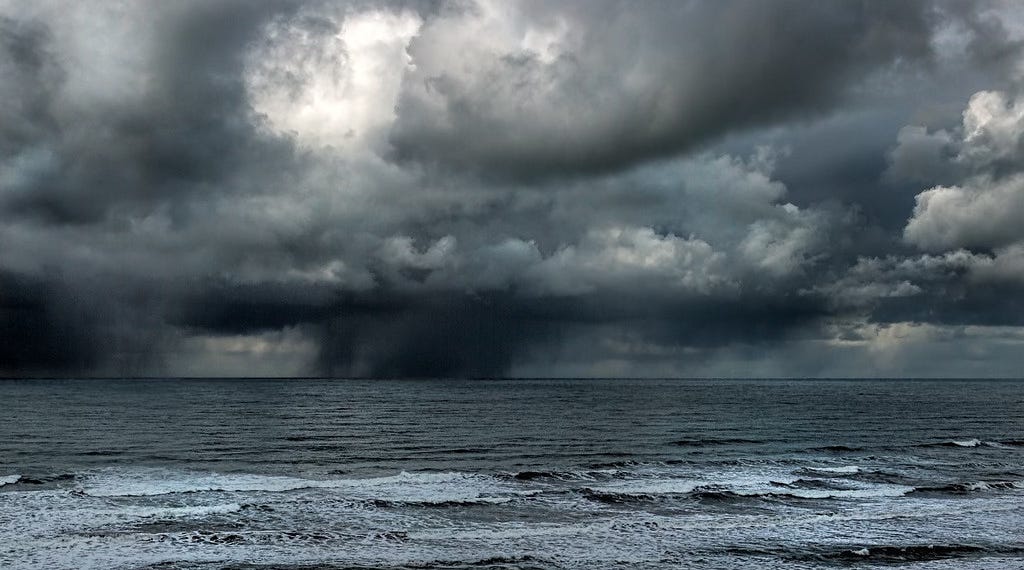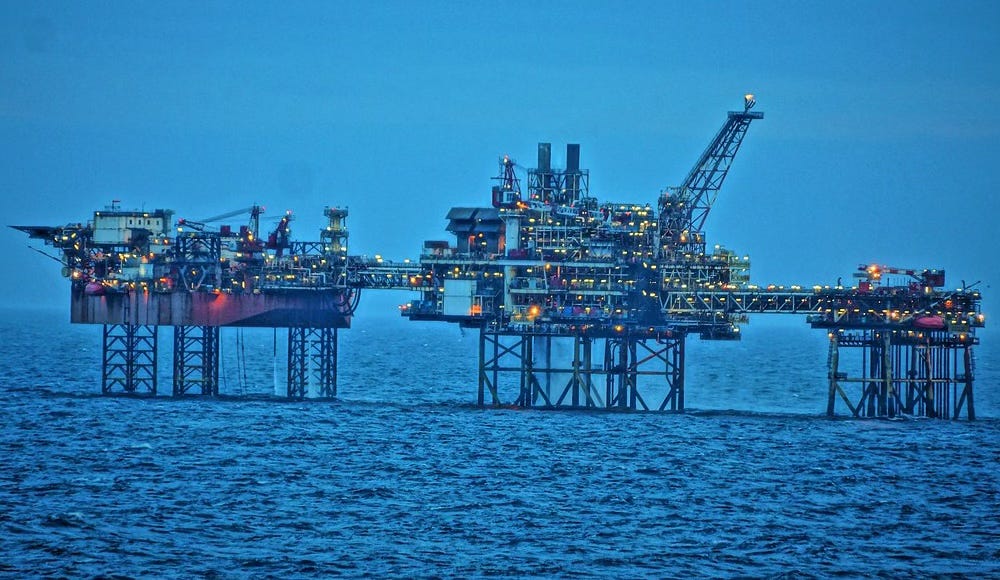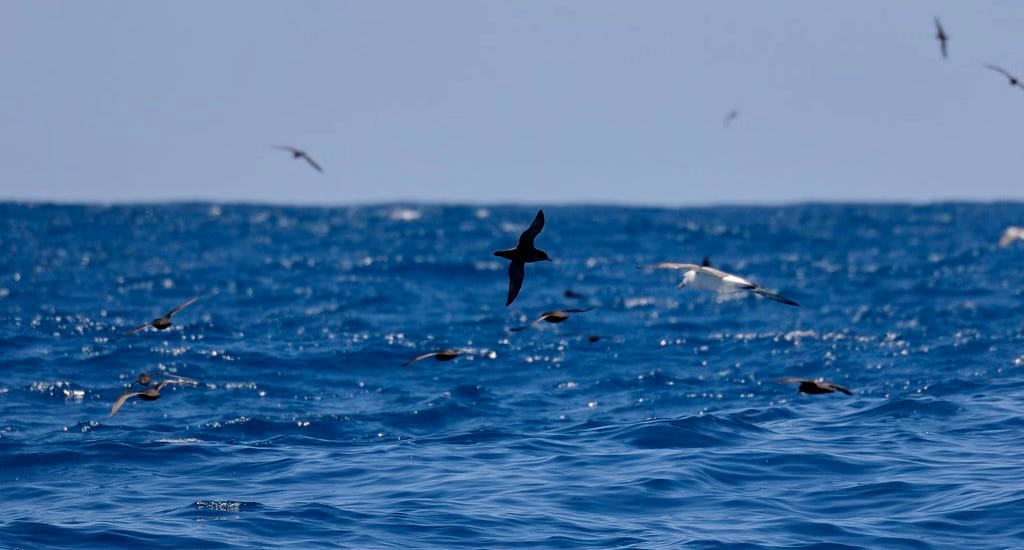Ray of hope for the suffocating sea
A celebrated climate win comes as heat stress causes carnage in the ocean.

Small island states secured an ocean-related climate win on 21 May. Thanks to a request lodged by the Commission of Small Island States on Climate Change and International Law (COSIS), a global maritime court laid out what countries are legally required to do to protect the ocean from the climate crisis.
As Verfassungsblog reported, the International Tribunal for the Law of the Sea (ITLOS) determined that human-caused greenhouse gas emissions count as ocean pollutants. It further said that countries are obliged “to take all necessary measures to prevent, reduce, and control marine pollution” from these emissions.
This is because states that are party to the UN Convention on the Law of the Sea (UNCLOS) are required to tackle pollution of the ocean under the provisions of the treaty. UNCLOS has 169 state parties and established ITLOS to interpret and uphold its rules.
The climate crisis poses a real and present danger to marine ecosystems. Indeed, a 2022 study warned that accelerating emissions, which drive global warming, risk bringing about a mass extinction event in the ocean.
Nevertheless, emissions of carbon dioxide and some other greenhouse gases continue to increase.
Holding polluters accountable
In early May, the Scripps Institution of Oceanography revealed the latest record-breaking rise in levels of carbon dioxide in the atmosphere. Scripps is a department of UC San Diego that records CO2 levels daily at the Mauna Loa Observatory.
The monthly average concentration of carbon dioxide in the atmosphere in March was 4.7 parts per million higher than in March 2023, according to Scripps’ observations. This is the largest increase ever recorded over a 12-month period.
Moreover, a study published on 13 May warned that CO2 levels are currently rising 10 times faster than they have in the last 50,000 years.
A periodic weather event called El Niño played a role in the latest year-over-year rise recorded by Scripps. But as Ralph Keeling pointed out, who is the director of its CO2 program, the primary reason why CO2 levels are increasing is “continued global growth in the consumption of fossil fuels.”

The world’s countries are not equally culpable for emissions from fossil fuel production and consumption. When taking historic emissions into account, richer nations overwhelmingly bear the most responsibility.
In its advisory opinion, ITLOS said that countries with greater resources are expected to do more to tackle emissions pollution than states with less capacity to take action. It also advised that countries’ efforts under the Paris climate agreement do not automatically suffice to satisfy their legal duties under UNCLOS.
Responding to the opinion, Tuvalu’s high commissioner to Fiji, Eselealofa Apinelu, said:
This is a historic moment for small island developing nations in their quest for climate justice; an important first step in holding the major polluters accountable, for the sake of all humankind.
The climate crisis poses a severe risk to Tuvalu and other island nations as it is leading to rising sea levels, which threaten to swallow some of them whole. Island nations are also grappling with extreme coastal weather events, marine biodiversity loss, and other issues.
Although advisory opinions are non-binding, ITLOS’ determination sets precedents for climate legal cases. It may also influence other forthcoming climate-related opinions from international courts and strengthen global climate negotiations. ClientEarth lawyer Lea Main-Klingst commented:
This outcome can be instrumental to push countries most responsible for the climate crisis to ramp up their ambition.
Unchartered waters
The ocean absorbs some 90 percent of the excess heat in the atmosphere, according to scientists, along with around 25 percent of the carbon emissions we produce each year. In other words, the climate crisis places a heavy burden on the deep blue part of the planet - and those who call it home.
Alongside ocean acidification, global warming is bringing more regular marine heatwaves. In a 2021 report, the Intergovernmental Panel on Climate Change said that the frequency of marine heatwaves has doubled since the 1980s. It further found that they have increased in length and intensity.
Weather events like El Niño also heat up parts of the ocean. The combination of such weather patterns and climate crisis-driven high ocean temperatures is “pushing the world into uncharted waters,” researchers have warned.
Heatwaves can devastate marine-dwelling lifeforms, as illustrated by the enduring global coral bleaching event that has been happening since early 2023. Bleaching occurs when corals evict symbiotic algae from their tissues due to stressors like increased temperatures, which turns them white.
Reef ecosystems support around a quarter of known marine species, while providing people with a buffer against coastal weather extremes.

Cold waters fatal too
Demonstrating the extreme danger that reefs now face from heat stress, the US’ National Oceanic and Atmospheric Administration added three new threat levels to its Coral Reef Watch alert system in December. The highest of the new levels warns of a risk of ‘near complete mortality’, meaning that over 80 percent of corals in the identified area may perish.
As Inside Climate News has reported, marine heatwaves are causing mass die-offs of all kinds of sealife, including fishes, birds, mammals, and plants. In comments to the publication, Ben Noll, a meteorologist at New Zealand’s National Institute of Water & Atmospheric Research, said:
The impact of these warm seas may be difficult to grasp and comprehend, but the undersea world seems to be suffocating.
According to a paper published in April, it’s not only warmer waters that are proving fatal to marine wildlife. The study found that the climate crisis is driving “increasingly intense upwells of cold water from the depths,” due to the impact it has on ocean currents and pressure systems, the Guardian reported. In some instances, these upwellings are killing marine animals as they migrate to evade warming waters in the tropics.
Far-reaching consequences
Wild species play important roles in ecosystems, meaning their loss can have ramifications for the wider environment. As ecologist and author of Wildlife in the Balance, Simon Mustoe, has pointed out, for instance, ammonia from seabird poop combines with other substances to create atmospheric particles that seed clouds, which can help to cool the Earth and create rainfall.
One study also found that corals can benefit greatly from the presence of seabirds, with reef growth rates more than doubling when colonies are close by. This means that when seabirds are their neighbours, corals can bounce back quicker from bleaching events. Again, it’s the seabirds’ poop that offers these benefits, as the nutrients contained in their droppings fertilise corals.
Seabirds are impacted by the climate crisis in a variety of ways and can face mass mortality events in the wake of marine heatwaves.

Mustoe points to the blue whale as another species that contributes to “cooling the planet” by “stirring and fertilising the ocean”. The blue whale’s future is also in jeopardy due to global warming, as polar ice melting may impact its diet and migration.
In his book, Mustoe outlined how the behaviours of countless wild animals – on land and at sea – shape and influence the wider environment. Others have highlighted these synergies too, with a 2023 paper detailing the important role of wild animals in limiting global warming specifically.
Due to these interconnections, Mustoe wrote in his book:
We have to stop thinking about animals and ecosystems as one thing or the other and realise they are one and the same.
Boot and braces approach needed
Writing on X, earth system scientist Aaron Thierry emphasised that ecosystems respond slowly to climate crisis-driven changes. This means that the impact on nature of climate change that has already occurred “will play out over generations,” he warned.
To limit harms to nature now and in the future, concerted action to reduce emissions is needed, as the ITLOS opinion makes clear.
Tackling other threats to biodiversity is also imperative, as this helps to strengthen species’ resilience in the face of climate shocks. For the ocean’s lifeforms, pollution from sewage, plastics, and other chemicals, pose a grave threat. Disease does too, such as the bird flu that is currently proving fatal to many marine animals.
But the biggest menace to marine life is unsustainable exploitation. In an interview with Mongabay, the renowned oceanographer Sylvia Earle explained:
Life in the sea is in trouble because we’re the most aggressive predators, taking far more than the systems can replenish. And that’s not just harming them — it’s harming us because the ocean and the planet are living systems. It’s held together by every element that has a role to play.
This particular menace has an obvious solution, she said:
We do know what to do now … it’s to show some restraint to stop the killing, start the caring, and watch for good things to happen.

